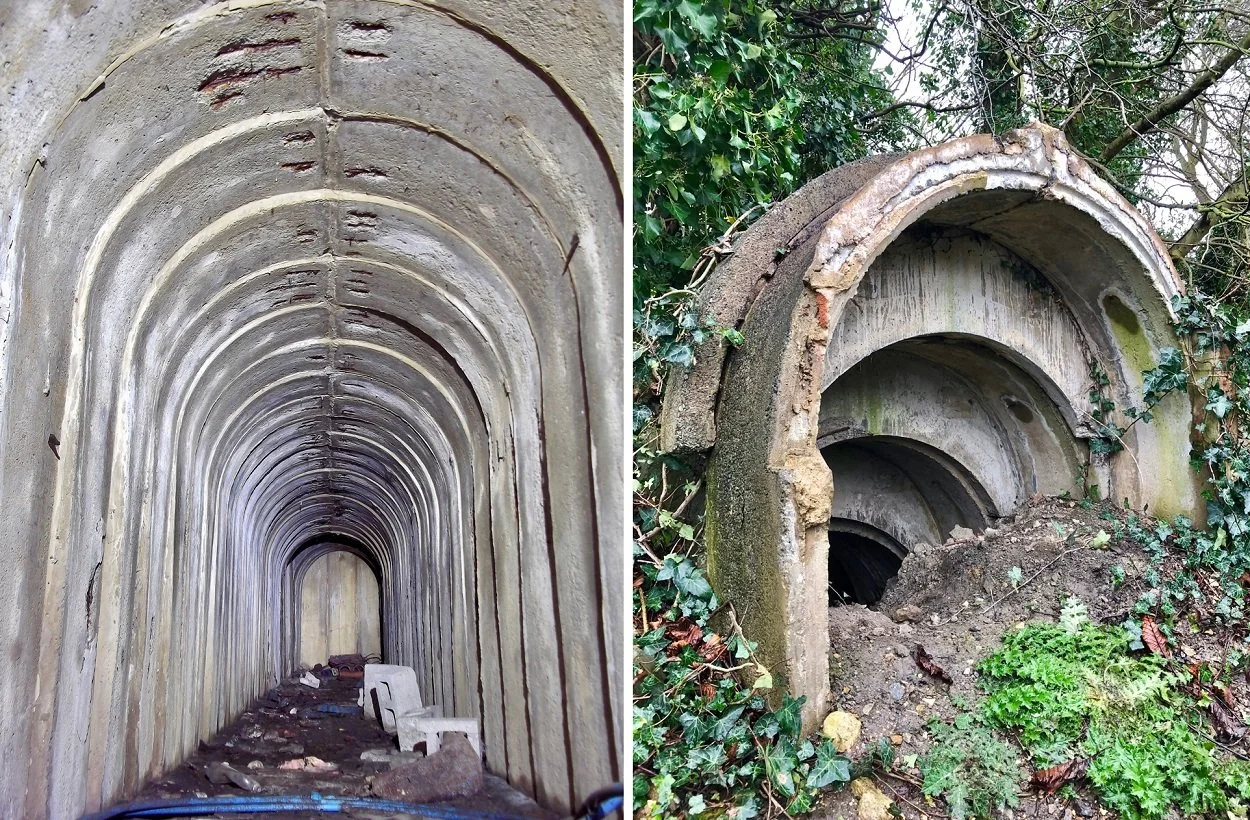Researchers from the Sywell Aviation Museum have announced the rediscovery of a preserved WW2 air raid shelter in Kettering, England.
The shelter was uncovered within the grounds of St Peters School during clearance works, revealing the concrete entrance to a tunnel system blocked by soil and rubble.
During WW2, the school was the private home of the Timpson’s, the same family that owns Timpson retail business group with over 2,000 stores across the UK.
The house, known then as Sunnylands, was built in 1893 by the Timpson founder, William Timpson, and remained with the family until it was converted into the Kettering Preparatory School in 1946, and later renamed to St Peter’s School.
According to the Sywell Aviation Museum, the shelter is of a distinctive design often found on London Midland Scottish (LMS) railway sites, such as ones constructed at The Grove in Watford.
During WW2, Sunnylands was located adjacent to the former Kettering marshalling yards owned by the LMS, which was used to separate railway cars onto one of several tracks.

This made the yards an attractive target for the German Luftwaffe in disrupting freight across the LMS network, serving routes in England, Northern Ireland, Scotland and Wales.
The shelter uses precast concrete barrel vaulted panels roughly mortared together, while the entranceway is formed of descending precast concrete rings. Within the interior are the remains of several corroded barrels, a pram, and numerous pieces of masonry and burnt wood.
Based on the visual evidence, it is likely that the WW2 air raid shelter has been disturbed in more recent years, further evidenced by the spray painted logo of the British Rail Double Arrow logo on an interior wall that was designed in the 1960’s by Gerry Barney.
Header Image Credit : Sywell Aviation Museum
Sources : Sywell Aviation Museum





